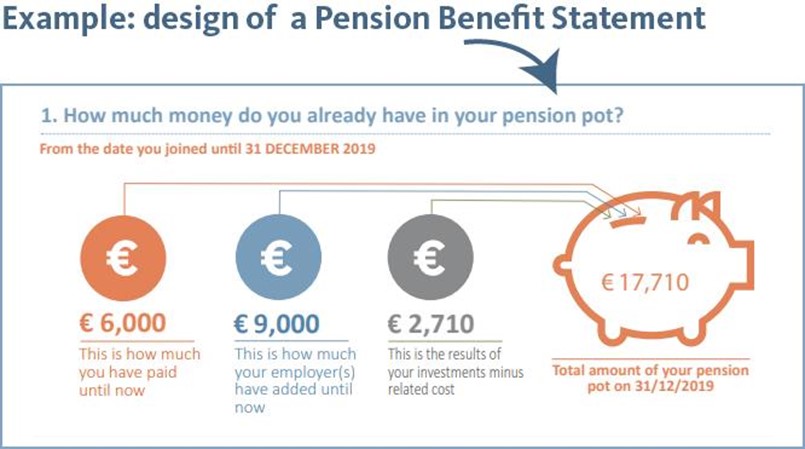
A] Prelude to understanding behavioural insights*
* For more general information about pension systems and risk, feel free to visit our dedicated webpages:
https://expatpensionholland.nl/global-pillars-systems
https://expatpensionholland.nl/global-investments-risks-0
Behavioural insights are generated by empirical evidence from behavioural sciences and aim to identify the factors that impact our decision-making and our behaviour.
Behavioural factors include for instance our motivation, attitude, belief system and our perception of the information that is available to us. They can help us to detect and better understand market and policy issues and contribute to developing appropriate behavioural interventions.
As EIOPA is the central regulatory body for pensions in the EU, we will now gladly show how EIOPA uses these aspects in their policy making which impacts the whole EU population.
B] How are they used in policy-making?
Behavioural insights can help us to detect and better understand market and policy problems and contribute to developing appropriate behavioural interventions.
Different types of interventions can be used:
• they can focus on design aspects, for instance to guide consumer choice;
• they can seek to change the way information is communicated to consumers;
• they can consist of educational initiatives to facilitate more informed consumer decisions.
Behavioural insights can help explain why people tend to make “mistakes” leading to sub-optimal decisions and hence why they do not behave in a rational way, an assumption often made by behavioural economists in the past.
Behavioural interventions are therefore a complementary tool to conventional policy tools used by policymakers, such as financial incentives or bans.
C] Why are behavioural insights relevant for the insurance/pensions sectors?
In the insurance and pension markets, consumers face complex choices and uncertainty due to the complex nature of insurance policies and the frequent use of a technical jargon or terms. When deciding whether to purchase insurance or to save in a pension product, consumers have to assess risk and uncertainty and to make trade-offs between the present and the future.
When faced with complexity, many choices, risk, uncertainty and incomplete information, people are more prone to behavioural biases, for instance they would have a tendency to under-estimate risk, e.g. how likely it is that an undesirable event will occur (e.g. the risk of flooding). They also have a tendency to focus on the short-term and want to avoid ambiguity, leading them to postpone decisions.
Furthermore, when prompted to take complex decisions such as financial decisions, people tend to rely on intuition and use simple rules of thumb or ‘mental shortcuts’ (e.g. relying only on how an investment has performed in the past and assuming this will continue into the future) leading to sub-optimal decisions (e.g. a selection of investments that is not best suited to their needs).
Behavioural insights can help understand the biases that affect consumers’ decisions in order to develop solutions that can effectively mitigate the effects of these biases and induce behaviour change.
For instance, they can be used to design more effective disclosure documents for consumers. Moreover, a better understanding of behavioural insight and biases contributes to enhanced monitoring activities and supervision.
D] How does EIOPA use behavioural insights?
I. Pensions: improving the information received by pension holders
EIOPA used insights from behavioural economics and communication science for the first time in 2013 in its Good practices on information provision for DC schemes”, also known as the “Max Report”.
The report includes advice and best practices on how to present information to pension scheme members, on how to inform and support them to make the appropriate financial decisions in their retirement planning.
EIOPA has used the persona of ‘Max’, an average European citizen (and not linked to F-1 pilot Max Verstappen), not homo economicus, who has limited time and motivation to think about retirement planning.
Behavioural insights show that in order to be effective, information needs to take human characteristics into account. Well-structured information can help people like Max comprehend and stay motivated. The concept of ‘layering’ was introduced as a tool to present information in different layers, with a ranking of priorities, from ‘must know’, to ‘should know’ and ‘nice to know’.
Building on the Max Report, EIOPA published further behavioural insight guidance on the information document sent each year to members of occupational pension schemes in the Report on the Pension Benefit Statement (PBS).
This work led to the design of two model Pension Benefit Statements that provide practical guidance on how to implement the annual statement to IORP members.
The statements show how to provide information by using these techniques:
• ask simple questions;
• order and structure information based on the layering principle;
• use visuals, symbols or diagrams.

In the Report on consumer testing of PEPP information documents, EIOPA gathered behavioural insights which informed its proposals on how to present information about the Pan-European Personal Pension (PEPP).
II. Principles and good practices in disclosure documents
Based on the work conducted in the area of pensions, EIOPA has drawn some key principles and recommendations which can be applied to information disclosures.
III. Enhancing consumer protection
Furthermore, EIOPA undertaken various activities and studies to explore consumer decision-making, test different interventions and further inform its market monitoring activities.
The purpose of this work was to enhance consumer protection in the field of insurance and occupational pensions. EIOPA has also carried out research activities to understand consumer behaviour in the area of online insurance distribution.
IV. Dark patterns: practices that exploit consumer biases
While behavioural insights can and should be used in the interest of consumers, unconscious biases can also be deliberately used by financial providers to persuade consumers to purchase products that do not necessarily meet their needs, their objectives or risk profile.
